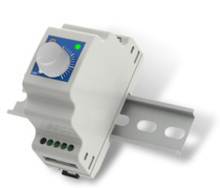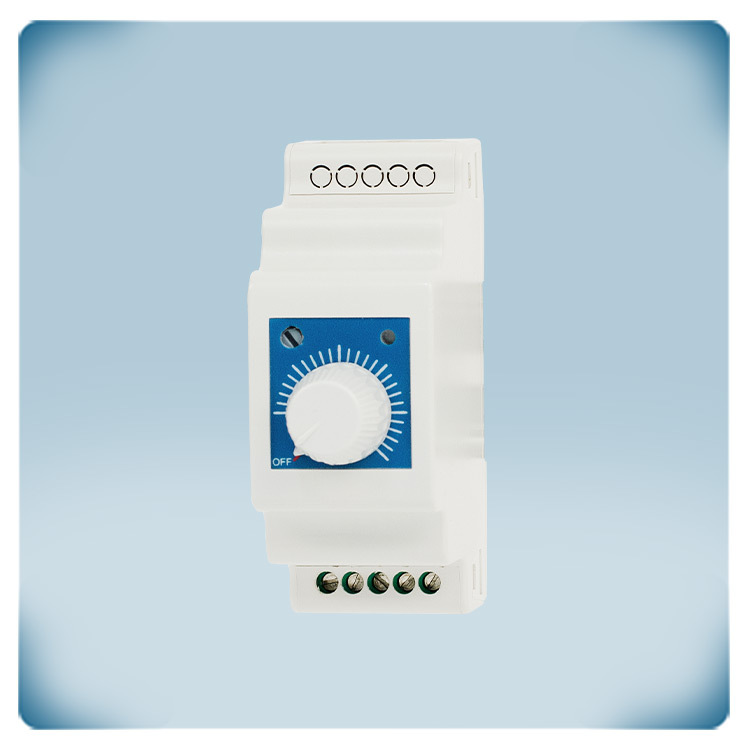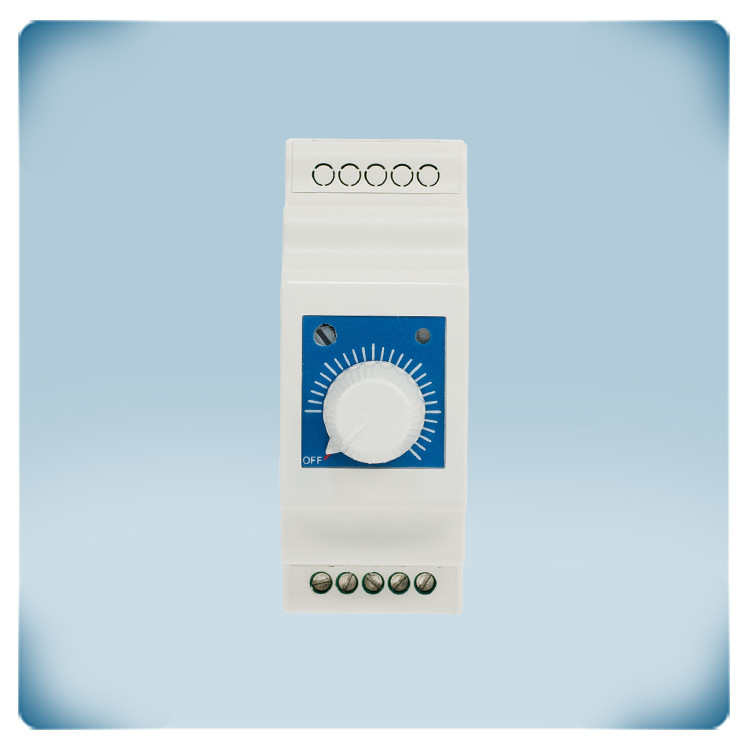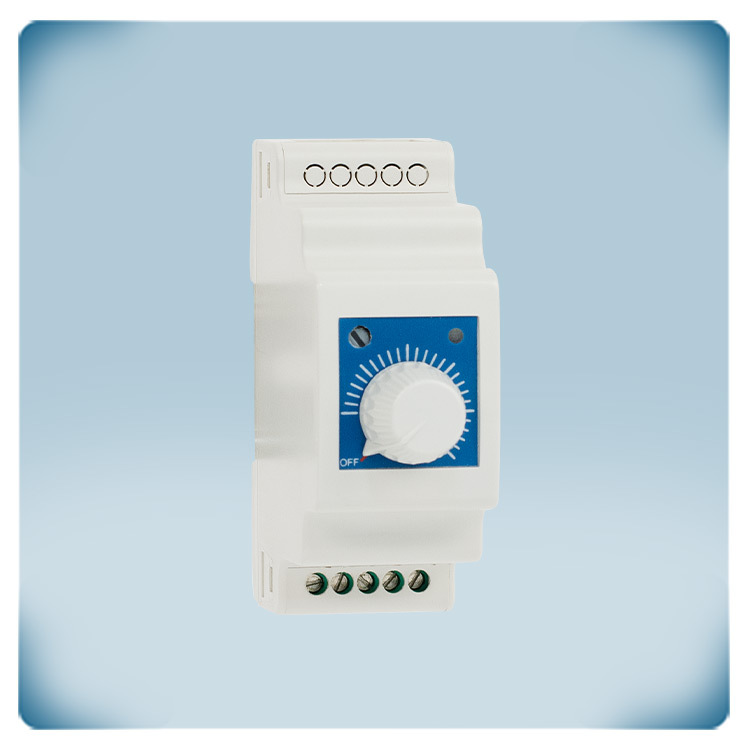EU declaration conformity
Variable fan speed controller for DIN rail - 1,5 A
Product description
This controller is designed for single-phase, voltage-controllable motors with a maximum current of 1.5 A. It regulates speed by adjusting the output voltage from 60 to 230 VAC.
The speed can be manually regulated from minimum to maximum via a rotary knob, which also includes a full OFF position. For precise control, the minimum speed can be fine-tuned with an internal trimmer.
Designed for DIN rail mounting, the controller also features a green LED to indicate its operational status.
Documents
Additional specifications and description
How Does This Controller Provide Simple and Efficient Fan Speed Control?
What we are usually looking for when it comes to ventilation control is a simple control solution that is also cost effective and reliable. Controlling the fan speed using this controller is as easy as turning on and off the lighting. Via its only button – the built-in potentiometer - the fan speed is set from minimum to maximum by simply turning it clockwise. The device a solid and reliable control solution which reduces the noise levels emitted by the fan and increases the service life of the motor connected to it thanks to the TRIAC technique used. Reduced fan speed uses significantly less power than maximum operation and can often be employed, typically during unoccupied or low occupancy. What you get is simplified manual control, reliability and efficiency.
What Is TRIAC Technology and How Does It Regulate Fan Speed?
TRIAC (contraction of triode for alternating current) is a three terminal electronic component that conducts current in either direction when triggered. In general, a TRIAC device is a semiconductor that can be used for AC systems as a switch. The technique used here is called phase-angle control and employs the ability of the power semiconductor to switch on current when its gate is energised and to automatically switch off again when the current flowing through it falls to zero.
What Motor Types Are Compatible and Can Multiple Motors Be Connected?
This series is intended for AC fans and control is realised via reducing the motor voltage. AC motors run on an alternating current and convert alternating current into mechanical power. This means that the series is suitable only for voltage controllable motors. You can connect several motors to the controller as long as the current limit is not exceeded. If you are not sure about your motor type, we strongly advise you to read carefully its accompanying documentation or contact the motor manufacturer.
How Can the Controller's OFF Position Be Managed?
The DRY features an OFF position - turning the potentiometer anticlockwise stops the motor. If necessary, the OFF position can be deactivated by making the right connections.
In this case, the motor can keep on working when the power supply is available, i.e. when the device is connected to the mains, even though the device has not been manually enabled by turning the potentiometer. As standard, the supply voltage is connected via terminals L and N. Should you disable the OFF position, you need to connect the supply voltage via the terminals intended for the unregulated output, namely L1 and N.

What Is the Purpose and Function of the Unregulated Output?
The DRY features an unregulated output which is active when the motor is enabled. If the supply voltage is connected to L1 and N, the unregulated output is active while the motor is in operation. The unregulated output is used to control external devices such as dampers, relays, run indicators, etc. that can work without the need to regulate the incoming voltage. It is named so since it is either 0 V or 230 V. The maximum current of this output is 0,5 A.
How Is the Minimum Fan Speed Adjusted?
The DRY features a trimmer for adjusting the minimum fan speed placed on its front. The motor might produce a little more noise at lower speeds and in order to minimise these and to avoid motor stalling at low speeds the minimum motor voltage can be adjusted via the minimum speed trimmer. It can be set within the range 20 - 70% of the supply voltage.
What Are the Installation Guidelines and Enclosure Features?
This fan speed controller is DIN rail mounted inside an electric cabinet. DIN rail electronics have been around for a long time and are becoming increasingly popular in industrial applications across a wide range of industries. Installation is very simple – just mount the device onto the rail and lock it using the pin at the bottom of the device. The ingress protection rating of the enclosure is IP30 – protected from dirt and dust.




.webp)
.webp)
.webp)
Remarks, reviews & ratings